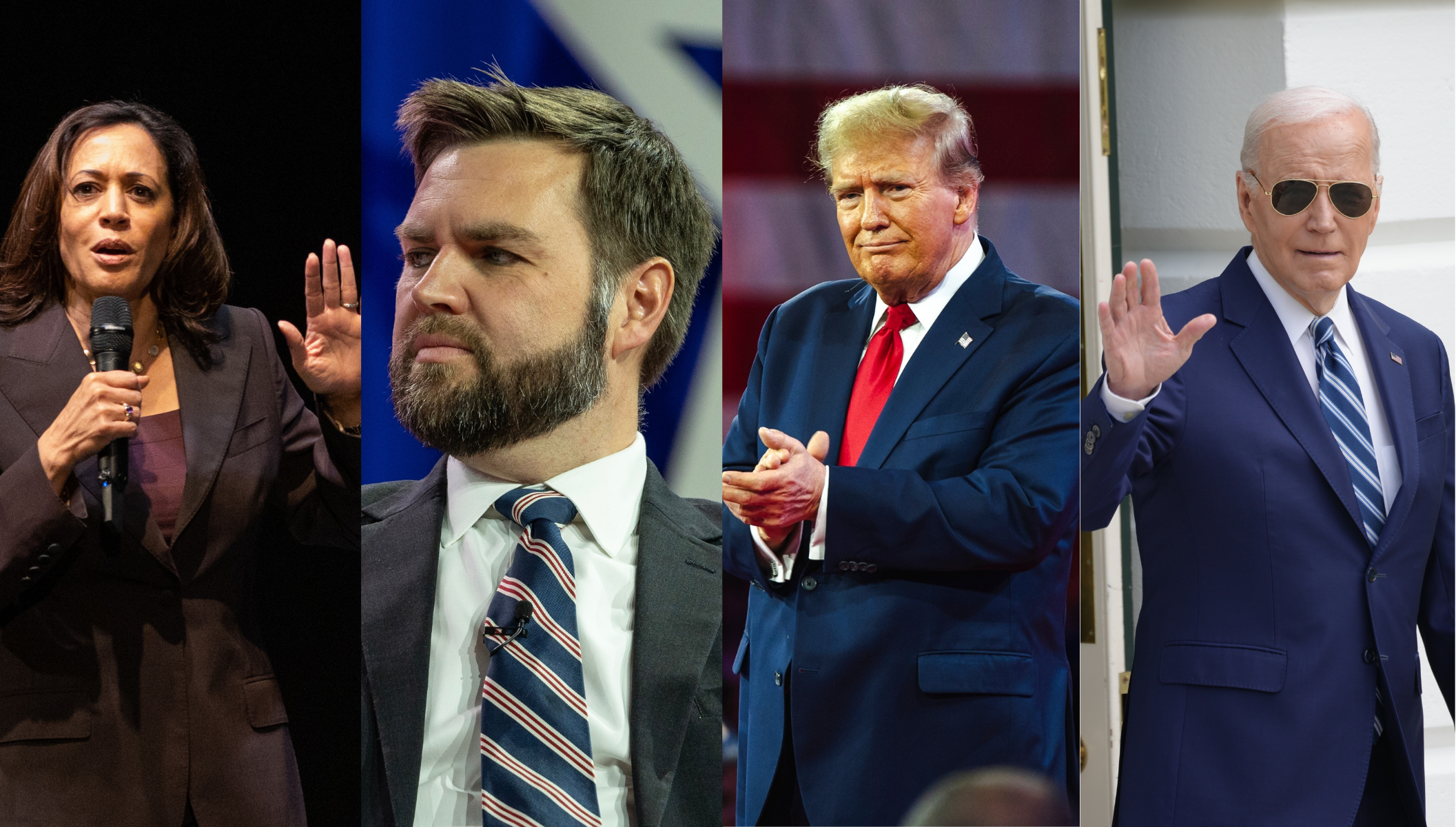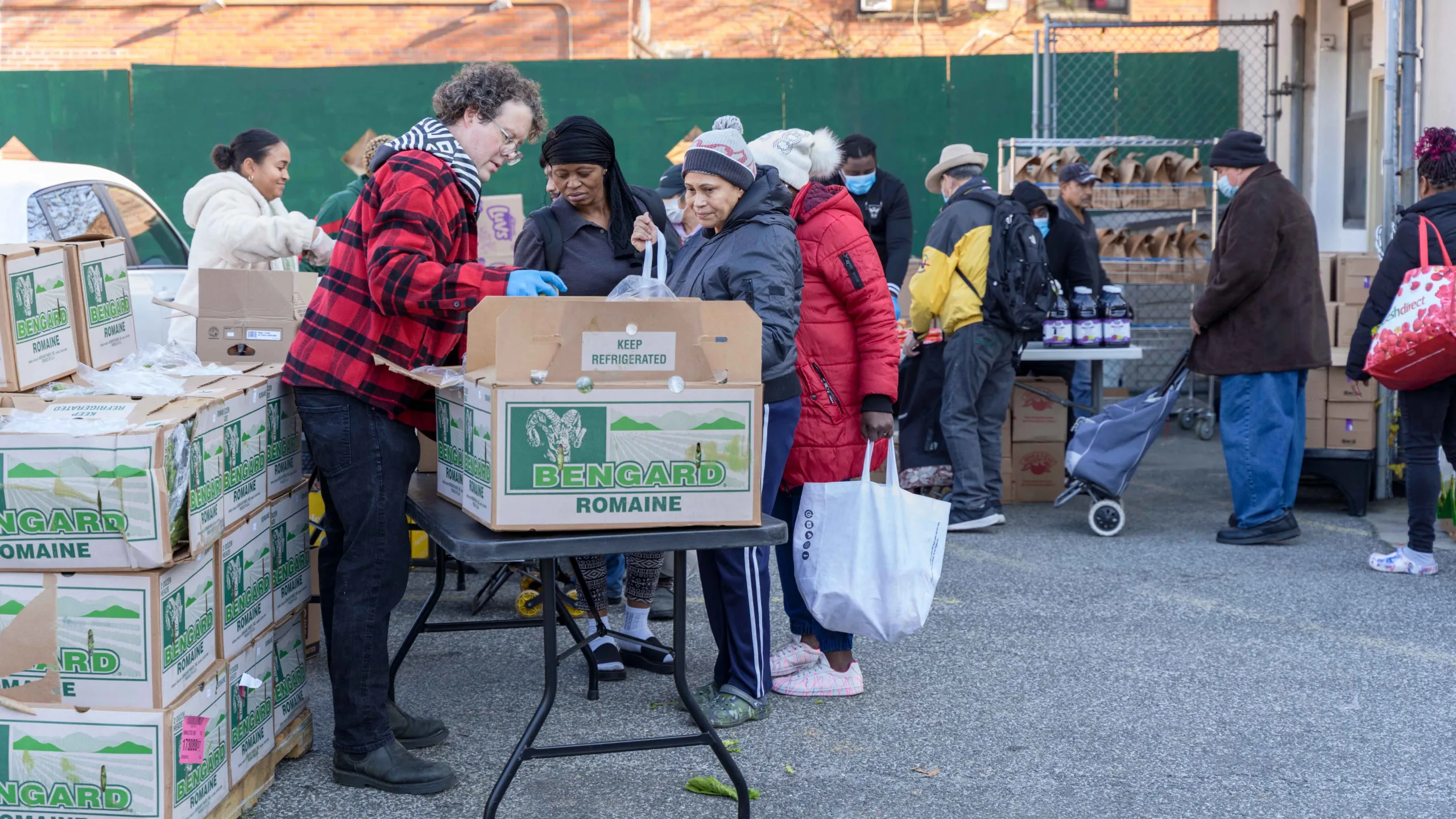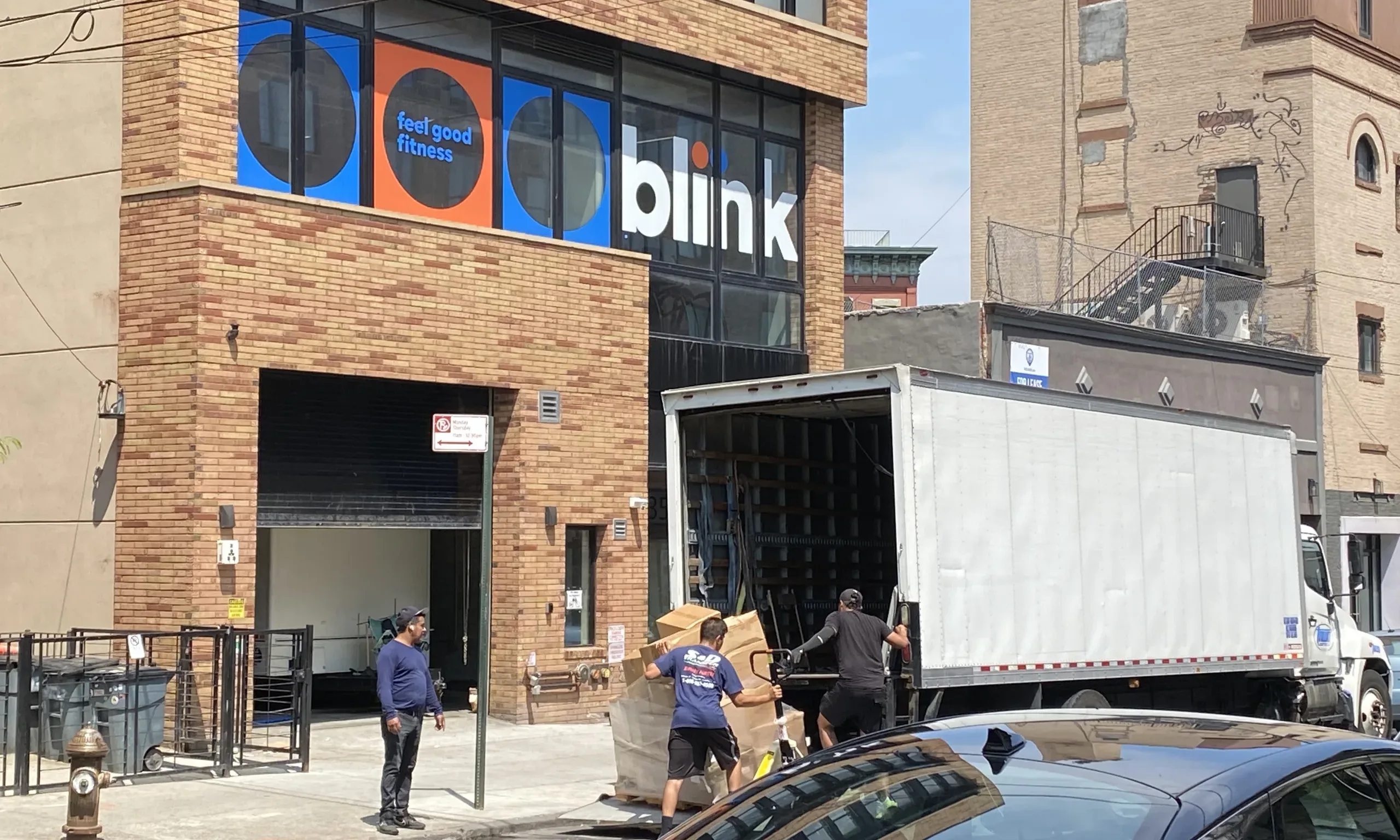In an unprecedented turn of events, President Joe Biden dropped out of the 2024 electoral race and endorsed Vice President Kamala Harris as the Democratic party nominee. This will change the race significantly, but one thing is unlikely to shift: Republicans’ positions on immigration.
Last week, Republicans centered immigration throughout the four-day Republican National Convention in Milwaukee. As the Democratic National Convention is scheduled to take place in Chicago from Aug. 19 to Aug. 22, how will Democrats respond to all that was said about immigration policies and immigrants at the RNC?
In many ways, the RNC felt like watching a blockbuster movie. Speakers who took the stage engaged the crowd with speeches critical of the fentanyl crisis, immigration policies, and violent crime. Some shared stories about how they lost family members to fentanyl, rape, and violent crime due to what they describe as the Biden administration’s failure to “close” the border and better handle crime.
To dive deeper into the Republicans’ immigration messages, Documented turned to Aaron Reichlin-Melnick, policy director at the American Immigration Council, where he directs the Council’s administrative and legislative advocacy efforts to provide lawmakers, policymakers, advocates, and the general public with accurate and timely information about immigration in the U.S.
During our conversation, we addressed the following questions: How open is the border? Is there a valid connection between the fentanyl crisis and border policies? How can immigration rhetoric during the 2024 elections be grounded in facts rather than fear? As the narratives being centered by the GOP is that immigration increases crime rates, do these types of rhetoric actually make communities safer?
While watching the RNC, the idea of an ‘open border’ stood out to me. Speakers used that phrase to center anti-immigrant rhetoric and canvas for votes for Trump. Families who have lost a loved one to fentanyl, and in another case, rape crime where an immigrant from El Salvador was arrested in the killing, per police reports, blamed it on an open border.
Is there a misunderstanding of what an open border is? How open is it now during the Biden administration versus during Trump’s tenure?
I think this question of an open border, at its heart, is a question of terminology. The academic and legal definitions of an open border, not that there really is one, are different from the terms being thrown around in common parlance.
When you look at this question, is the border open? The answer is, of course, no. The United States does not have an open border.
An open border is a border that any person can cross without any kind of restrictions. The border between New York and New Jersey is an open border. In an international context, the border between France and Germany is an open border, there are no restrictions you can simply drive across.
Not surprisingly, that is not what we have at the US-Mexico border. And that is what we have not really had at the US-Mexico border since arguably around 1917. Though I would argue before then there were sort of quasi-open borders because there were a few restrictions. For example, Chinese nationals were barred entry under the Chinese Exclusion Act. But, essentially, we do not have open borders.
You can know that we don’t have open borders because a person who crosses them without permission is arrested, and they’re potentially sent to jail. That in and of itself is evidence that we don’t have open borders.
However, when you see Republicans and many others talking about open borders, they’re referring to any ability of a person to walk across the border at all. In some ways, their definition of open is ‘physically open.’ There is not a wall, there is not an army there ready to stop every person from making themselves five feet away from the border and physically shoving them back.
Any border in which any person can cross and have any possibility of not being immediately turned back is to them open, because it’s contrasted to what they view as a closed border — one that is sealed off and in which no people are able to cross, and there is a physical barrier preventing every person from crossing. Of course, by that measure, the U.S. border is not closed either.
Millions of people, hundreds of thousands of people every single day, cross the border from Mexico into the United States legally. Thousands cross the border from Mexico into the U.S. illegally. But the vast majority of border crossings in the US-Mexico border are legal crossings occurring at ports of entry. So we don’t have a closed border that way either.
It is very much not a border that any person can cross with no consequences. It’s also not a field border in which no people can enter at all.
So to some extent, I do think it comes down to this growing belief that zero people crossing the border should be able to ever make it into the country.
You saw that with [Republican House] Speaker Mike Johnson around the bipartisan Senate bill earlier this year. The bill provided that the restrictions would only go into effect when border crossings rose above 2,500 a day. And he said no, the number should be zero. You now have this belief that we need to get all irregular crossings down to zero and that anything other than zero is open — which is a very unrealistic viewpoint, given the history of the US-Mexico border and a history of border management globally.
No country has ever successfully brought an irregular process to zero — with the exception of, I would say, small Pacific Island nations, which of course, have the benefit of being small pacific island nations.
During the RNC, speakers also said fentanyl deaths have increased ‘because of border policies’. Is there a valid connection between both?
There is not. Fentanyl crossing the border has been rising for years. Customs and Border Protection first began separately reporting fentanyl seizures in 2016. Before that point, there were so rare as to not even be listed specifically, as opposed to large drugs that are trafficked in large quantities like heroin, methamphetamine, marijuana and cocaine. So by 2016, fentanyl seizures were already on the rise as synthetic opioids became more common. Seizures then rose every single year following that and have continued to rise every single year following that.
But the overwhelming majority of fentanyl that’s being seized is being seized at ports of entry — where it is primarily U.S. citizens or Mexican nationals with lawful status to enter the United States bringing it in. This is a pattern that we have seen with hard drugs for decades. And if you talk to any law enforcement agency, they’ll tell you this is how hard drugs are brought into the United States, for a very simple reason: The chance of being caught at a port of entry is vastly lower than the chance of being caught if you tried to bring the drugs between ports of entry.
In the 1990s to 2010, the only drug that was brought across the border more between ports of entry than at ports of entry was marijuana, in large part because marijuana is heavy, it’s bulky, and it doesn’t pack as much of a punch in the volume. It also smells. It’s a lot easier for a drug sniffing dog to detect marijuana at a port of entry than it is to detect very well wrapped fentanyl or cocaine or something along those lines.
Hard drugs, by and large, came through the ports of entry, because there were also financial aspects of it. If you catch a single person in the mountains carrying 40 pounds of marijuana, that doesn’t cost that much. Overall, the lost profit is relatively minimal. If you catch somebody with 40 pounds of cocaine or 40 pounds of heroin, that’s a lot of money, so the lost profit for bringing things across between ports of entry is much higher.
Hundreds of thousands of people cross the border every single day, and buried amongst that is going to be some amount of smugglers.
The reason that they often use U.S. citizens and people with visas is because those are the people who get the least scrutiny. U.S. citizens typically would just drive across the border, show their passport, and then keep driving, and that’s it. Whereas any person who’s crossing the border illegally is going into an environment with huge amounts of surveillance there, any person who is caught is going to be searched very carefully across their entire body.
So when the Trump administration says Biden is responsible for fentanyl traffic or that migrants are responsible for fentanyl trafficking, it’s just not true. Fentanyl trafficking is up because it is a big business. And as a big business, they know that the easiest way to get into the country is to pay people to bring it in at the ports of entry where there is the least likelihood of being caught.
J.D. Vance said, in an interview, there was “a strong undercurrent of people” concerned about immigration but “didn’t like being called racist for it.” As such, he became determined to speak about it. Whenever he does, he says migrants at the border are the source of increased fentanyl consumption in the U.S.
You’ve written several times that the humanitarian migrant crisis and the drug crisis are inaccurately conflated. What were your thoughts watching it happen again during the RNC?
I think it is, of course, possible to have concerns about immigration and believe that the level of immigration is too high or too low, without being a racist. It is possible to have those opinions. The problem becomes when migrants and immigrants themselves become tools or are seen as essentially faceless hordes crossing the border and not seen as the human beings that they are.
Of course, people who cross the border are people. Some of them are angels, who are the best people on the planet, some of them are not. Some of them are people who have committed crimes who should be scrutinized very carefully. But most of them are just normal everyday people who would like to live a pretty normal life, going to work, caring for their family, and feeding their children. And that is the overwhelming majority of migrants that are crossing the border.
You can have good faith disagreements about immigration and migration and especially around the border without resorting to dehumanizing the migrants themselves and without trying to say that they are all here to destroy us or that they are some sort of existential threat to the United States. This is just simply not true.
Of course, there are strains from the migrant arrivals — budgetary strains. There are needs that migrants have that other people might not have, as everybody intends getting on their feet. Again, some migrants, yes, may commit crimes and may do things that go against the cultural norms in the United States. The same is true of any people of any demographic of any nationality. Migrants are not unique about that.
I think while certainly Vance is correct, it is possible to oppose migration across the border without being racist, it is very easy to fall into the trap of dehumanization. To me, that is the biggest fear. It is when you stop treating migrants like they are human beings and start treating them like they are some amorphous threat that must be eradicated. That is when I think the real danger arises.
The way monologues and conversations are had about migrants, immigrants, and immigration policy in the U.S. nowadays feel to me like they are dwarfing the amount of factual information available to counter this narrative. I hear ill-informed commentary on the subway and even among friends and acquaintances.
In what ways can immigration rhetoric during this electoral year be really grounded in facts rather than fear?
It is important to always check facts. A lot of what was said at the RNC was completely wrong. A lot of that is in part due to the fact that immigration is enormously confusing. Immigration law is complex. It is often called second in complexity only to the tax code. And because there are a lot of incentives to inflate numbers and to put things in context that maybe aren’t particularly accurate.
Now, to some extent, this is not a partisan issue. Democrats get immigration facts wrong too. Republicans get immigration facts wrong, and Democrats get immigration facts wrong. The average American who doesn’t really know much about how the system operates often thinks that it is a lot more humane and sensible than it actually is. When you talk to the average American, they often think well, ‘listen, undocumented immigrants, if they’ve been here this long, why haven’t they just gotten citizenship?’ But of course, the system doesn’t let people do that. There’s no line they can stand in.
Similarly, people are bad with large numbers in general. You see things like ‘encounters numbers’ thrown around, not realizing that ‘an encounter’ is not all different people. You can have a million encounters. That doesn’t mean that’s a million people. One person can be encountered multiple times. You see things like ‘records’ thrown around, even though we’ve hit record apprehension. But that actually doesn’t mean that we’ve hit ‘a record number of people crossing the border’ because 20 years ago, most people crossing the border weren’t even stopped. The majority of people actually made it through. If you look at apprehensions, it’s not really apples to oranges here. It’s because we got much better surveillance at the border. We got a better sense of who’s crossing the border.
In part, people also just think that the government is much more powerful than it actually is. They think, well, of course, ‘we can just round everybody up. All of this is easy. It’s not that difficult.’ Or, ‘it’s easy to stop everybody.’ But the government is limited. We don’t live in a world where the government can perfectly track the location of every single person at all points, at all times. There are times when the U.S. government simply can’t do something, or other governments have a say in this. People don’t really like acknowledging the limitations of the U.S. government on enforcement.
But in some ways, if you look a little bit at the drug war, of course, you could make the same argument that no drugs should be in the United States, you know, ‘there should be no cocaine in the United States if we only hardened our borders.’ But we’ve tried doing that for generations and are failing pretty miserably at it.
Now, with migration, it is different. If you want to be grounded in facts, I think one of the most important things is to sort of have a good sense of Occam’s razor. What is the simplest explanation?
Is there a cabal of leftists who are trying to overthrow the United States and replace everybody with migrants? Or, are people, people? And the U.S. government is not omnipotent? And people want to come here because we’ve got a blazing hot labor market, and we’re the richest country in the world, and for many people, offer the option for safety that they don’t have at home? Which of those is the more likely scenario? Not the grand conspiracy, I would argue, but the reality is that the U.S. is still an incredibly desirable location for immigrants.
People want to come here because many of them still believe those age-old myths about the streets being paved with gold, and have updated them for the modern era, especially with the spread of social media. When influencers say ‘I’ve come here, I’ve migrated here, look at all the great things I’m doing.’ You might not know that, of course, it’s just all for the gram.
In reality, life is a lot harder. When you come here, as everybody knows, the streets are not paved with gold, making a new life in this country is difficult. But it’s hard to admit that when you sort of gave everything up and traveled thousands of miles to get to the border.
The narratives being popularized by the GOP is that immigration increases crime rates. But do these types of rhetoric actually make communities safer? And, as an immigration expert, is there something you’d expect for the Democratic Party to do or say in response to all that has been said about immigration policies and immigrants during this time?
I think immigration politics has always been complicated, and the Democratic Party has had a complicated relationship with it.
If you look 25 years ago, President Clinton led the Democratic Party to support one of the harshest anti-immigrant bills ever passed in Congress in 1996 — the Illegal Immigration Reform and Immigrant Responsibility Act — which set up a lot of the enforcement systems that we have today. Bernie Sanders used to be anti-undocumented immigrant, the labor movement used to be very anti-undocumented immigrant.
But the politics of that have shifted as those communities began becoming their [those politicians’] constituencies, and as undocumented workers joined labor unions. The SEIU opened up to undocumented members. The AFL-CIO now supports undocumented immigrants.
The politics of immigration has shifted a lot. Even things like being pro legal immigration, the Republican Party was very pro legal immigration under the Bush administration. You saw even 10 years ago, Ron DeSantis, supporting in-state tuition for students with undocumented youth who grew up here as children in Florida. Now, of course, aiming to strip it away. So you see these politics shift very quickly.
TestPost3
I think, unfortunately, they shift because people are afraid and worried about scarcity, worried about crime, and these fears that are often unrelated to truth. Immigrants don’t bring crime. Crime rates are falling. Crime in this country is not out of control. If you look at pretty much any statistics, this is the reality. That is not to say that there are not serious problems still, but sensationalism is much easier when you have an enemy.
Immigrants, often, are an easy enemy. Undocumented immigrants, in particular, are an easy enemy, because you can basically say, well, they shouldn’t be here, and if they weren’t here, everything would be better. That’s, of course, not true. A lot of things would be worse. Mass deportations would tear the social fabric of the country even further apart. There’s 22 million people in mixed status families in the United States. It would have enormous economic implications, let alone the humanitarian implications. But it is just easy to say it’s their fault because the message is simply easier.
I’ve said this before, ‘build that wall’ is a much easier message than look, ‘economics of immigration are complicated. The reality is that… ,’ you know. It is an easy message. It’s three words, and the counterpoint to that message is three paragraphs. That is just always going to be an easier message to sell. And Democrats really need to come up with better messaging in order to ensure that people don’t fall into the trap of this simple and easy solution that isn’t actually simple and isn’t actually easy when you try to get into it.












